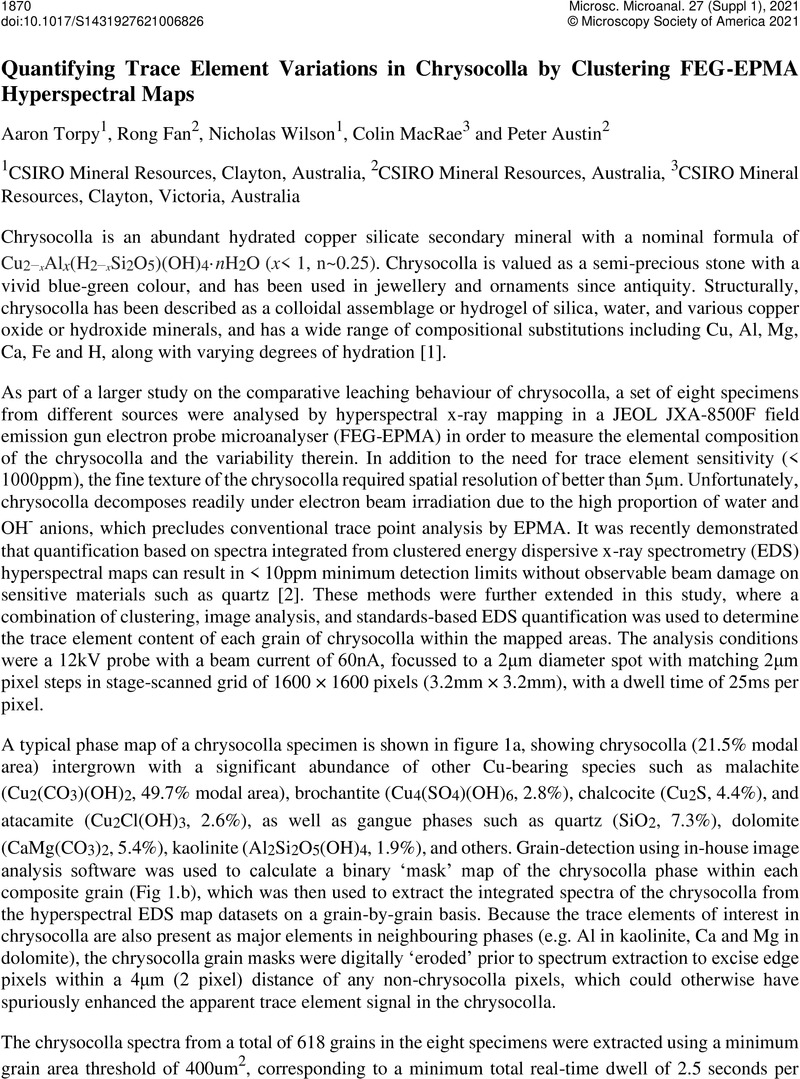No CrossRef data available.
Article contents
Quantifying Trace Element Variations in Chrysocolla by Clustering FEG-EPMA Hyperspectral Maps
Published online by Cambridge University Press: 30 July 2021
Abstract
An abstract is not available for this content so a preview has been provided. As you have access to this content, a full PDF is available via the ‘Save PDF’ action button.

- Type
- Unresolved Challenges in Quantitative X-ray Microanalysis
- Information
- Copyright
- Copyright © The Author(s), 2021. Published by Cambridge University Press on behalf of the Microscopy Society of America
References
Crane, M.J., Sharpe, J.L. and Williams, P.A. (2001). Formation of chrysocolla and secondary copper phosphates in the highly weathered supergene zones of some Australian deposits. Records-Australian Museum, 53(1), pp.49-56.Google Scholar
Torpy, A., Wilson, N., MacRae, C., Pownceby, M., Biswas, P., Rahman, M., & Zaman, M. (2020). Deciphering the Complex Mineralogy of River Sand Deposits through Clustering and Quantification of Hyperspectral X-Ray Maps. Microscopy and Microanalysis, 26(4), 768-792. doi:10.1017/S143192762000135XGoogle ScholarPubMed


